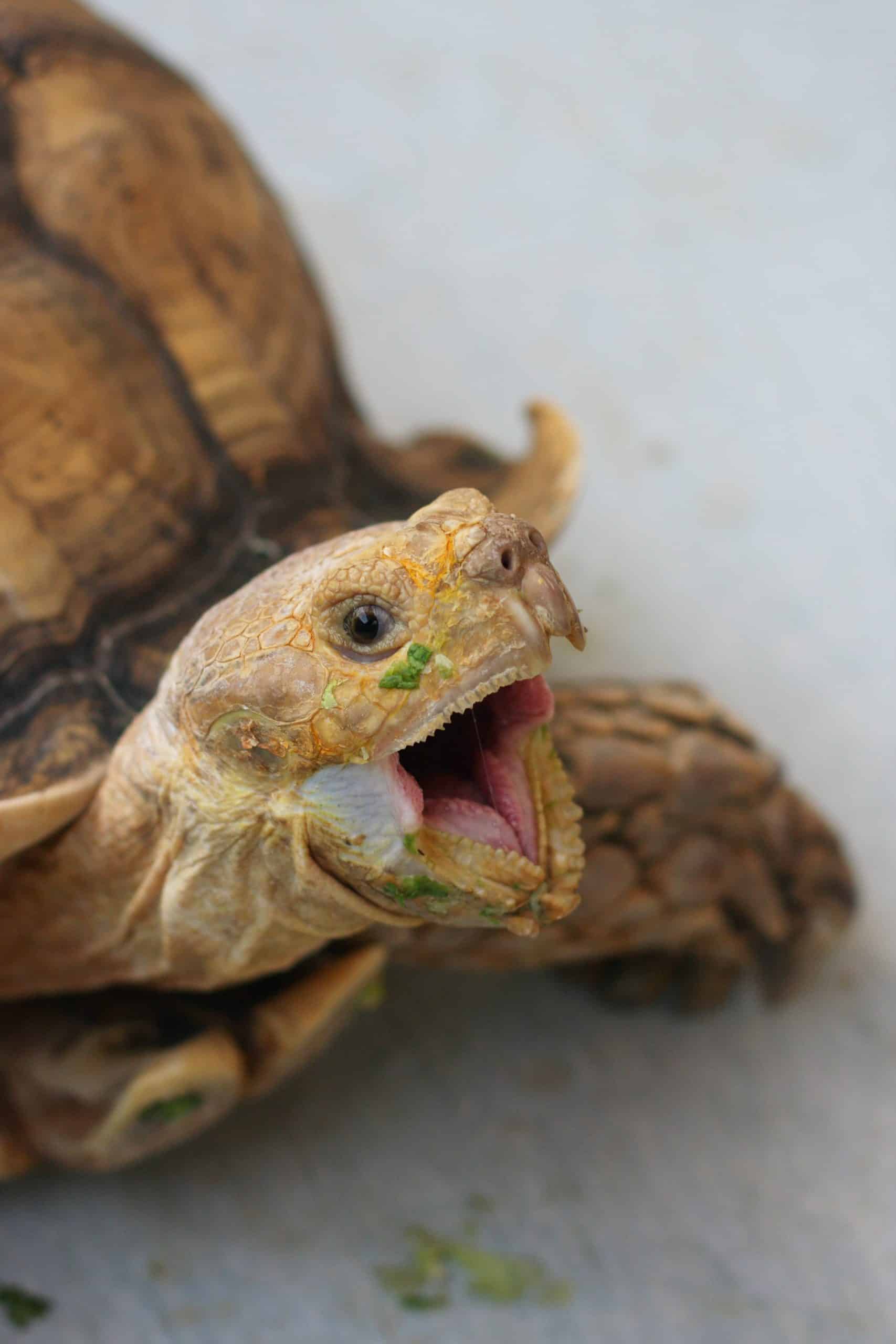Lee Richardson Zoo Species Spotlight: African Spurred Tortoise
In this series, we spotlight one of the many fascinating creatures that live at the Lee Richardson Zoo. In this blog, we’ll take a look at the African Spurred Tortoise.
The Basics
- Common Name: African Spurred Tortoise
- Scientific Name: Geochelone sulcata
- Hometown: Southern Sahara Desert, Africa
- Current Address: Lee Richardson Zoo Aviary
- Conservation Status: Least Concern
What’s a Tortoise Anyway?
All tortoises are turtles, but not all turtles are tortoises. While tortoises and turtles share a lot of similarities, they have some differences too. Typically, turtles have webbed feet and a flat, streamlined shell, which make it easier to swim through the water.
Tortoises, on the other hand, are turtles generally built to live on land. They have tough feet and claws made for traversing and digging in rugged terrain. Also, their shell is more round and dome-shaped. The short answer is: tortoises are land turtles!
Jumbo Size
The African spurred tortoise is the third largest tortoise in the world. Males can grow up to a whopping 200 pounds and 30 inches long. Females can grow to around half that size.
The tortoise’s shell is made of keratin, which is the same stuff that your fingernails are made of. While the shell protects them, they can still feel pain through it, the same way you can if you smash your finger. So, be gentle if you ever find yourself handling a tortoise.
Built for Heat
The African spurred tortoise is built for the heat. Its natural environment is so hot that they don’t hibernate the way other turtles and tortoises do – there’s no winter in the southern Saharan desert. Instead, they are always looking for ways to cool down.
If they ever get flipped upside down in the daytime, they could easily die of overheating. So, if you ever find a tortoise in the wild upside down, be sure to flip him over to help him out.
To escape the heat, the African spurred tortoise uses their tough feet and claws to dig burrows up to 20 feet deep. These burrows are so deep, they basically create an entire ecosystem. All kinds of creatures use the burrows for shelter once the tortoises move on.
Vegan Menu
You probably wouldn’t love the diet of an African Spurred Tortoise. First, they are herbivores, which means they only eat fruits and vegetables. Back in Africa, they eat flowers, grass, cacti, and weeds – whatever green stuff they can find in the desert.
Another special trait of this desert dweller is that they can survive for weeks without water. But as soon as they find water, they will guzzle as much as 15% of their body weight!
Reproduction
Once a female tortoise is ready to lay her eggs, she will get to work digging her nest. Usually, she will dig several versions before finally deciding which one is best for her babies. When she’s ready, she will lay up to 30 eggs, then bury them again. Eight months later, the baby turtles emerge from the nest and begin their lives!
Go Take a Look
If you’re curious what the African Spurred Tortoise looks like in real life, head down to the Lee Richardson Zoo and see for yourself. You can find this shelled creature in the aviary. The zoo is open from 8am to 5pm, and admission is free! Check out their website here.


